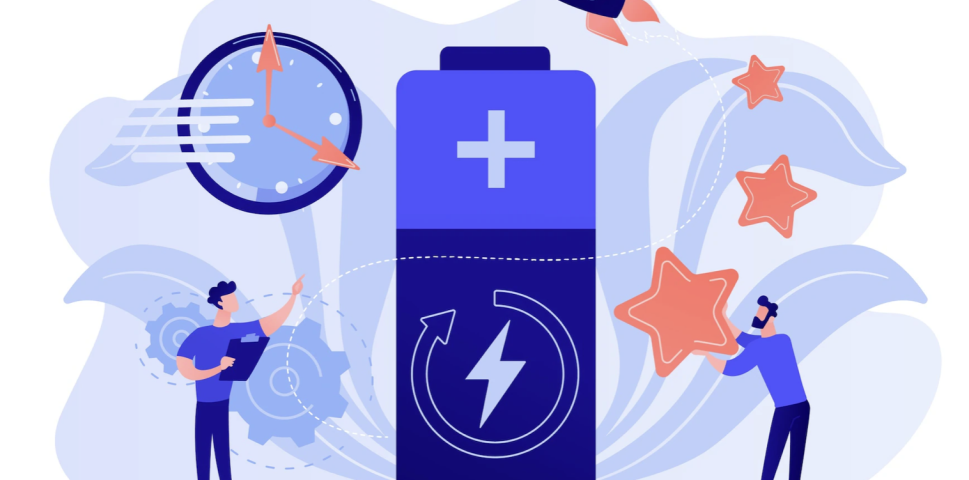There has certainly been rapid growth in the market for electric vehicles (EV), in part due to their associated (and celebrated) environmental attributes. What receives much less attention, however, is the looming waste-management challenge, particularly for EV lithium-ion batteries (LIBs). The proliferation of post-consumer LIBs has yet to fully materialize given the recent installation of long-life LIBs across multiple vehicle industries, but the environmental price for the switch to EV will soon be paid by EV makers.
Currently, brands are scrambling to both develop their EV offerings and determine their resource recovery strategies around LIBs, which will be a source of strategic elements and critical materials for key components in new EVs, as well as a coming materials efficiency compliance obligations internationally. So just where does LIB recycling stand today?
Re-Use as Energy Storage or Charging Stations
Recently, there has been some positive attention paid to the re-use opportunities for end-of-life LIBS – either as energy storage units or as part of EV charging stations- which Re-use is an accepted method of resource recovery, including under regulated LIB circular economy laws so there may well be a portion (however small) of post-consumer LIBs which are deployed for these projects.
The metals content of LIBs, however, is sufficiently valuable and the coming demand for LIBs is so great that the lithium-ion battery recycling industry will necessarily take the lion’s share of available batteries, even though the content of the LIBs continues to rapidly evolve as the technology develops. Specific recovery goals applied to LIBs is a moving target right now.
LIBs and Eco-Design
Remanufacturing is permissible, if not encouraged, as a resource recovery activity under most legal regimes. For LIBs, this usually requires the disassembly of the LIB to at least the module level. This will require high-voltage training and specialized tools to protect the operators and the battery from electrocution and short-circuiting risks, respectively. There are also potentially toxic gases released in the process.
All of which highlights a key industry question- will there be eco-design rules such as right-to-repair disclosure and accessibility obligations upon the brands and their LIB providers, particularly given the variance in LIBS emerging across the vehicle spectrum. The EU Right-to-Repair obligations for other e-waste, such as lighting, televisions and large appliances are set to apply within Europe as of April 1st, 2020 under the EU Eco-Design Resource Efficiency Standards. It can be anticipated that similar accessibility obligations, including perhaps labelling and design data disclosures, could apply to LIBs in spite of the acute safety concerns.
Recycling, But Without Common Standards
The recycling of LIBs is certainly complicated by the myriad of physical configurations, cell types and chemistries, however leading companies are beginning this challenge through innovative process technologies capable of recycling a diverse feed of lithium-ion batteries. Still, design-for-recycling of LIBs is not likely too far away and there are already state-of-the-art processing facilities in Europe and North America that engage in some recycling combination of stabilization, opening and separation of the LIB.
Proprietary LIB Recycling v. Industry Solution
Like every resource recovery market, there are EV brands which are seeking to develop market leading “closed loop” processes for their materials, through significant direct capital investment and / or strategic partnerships with the LIB maker and the specialized recycler. These processes involve centralization of receiving and processing, with a heavy reliance on custom automated processing which may permit sorting for some combination of remanufacturing, re-use and recycling. In the near term, these investments are likely to remain proprietary to the individual brands with limited accessibility to the rest of the industry.
For the remainder of the brands, the resource recovery pull will come either from the LIB maker servicing multiple brands or the local LIB recycling industries quickly growing around the pending demand, whether driven by waste diversion or circular economy requirements. For now, there is likely more splintering and less convergence in the near term as brands come to fully develop their EV offerings, leaving legacy challenges for LIB recyclers in the years to come.
_____
Two regulatory pushes will eventually bring needed standardization to LIBs: consistency of EV charging as an accessibility right; and circular economy / materials efficiency obligations for end-of-life LIBs as environmental compliance for EV industries. However, as to when common standards (and common chemistries) are adopted is anyone’s guess.





